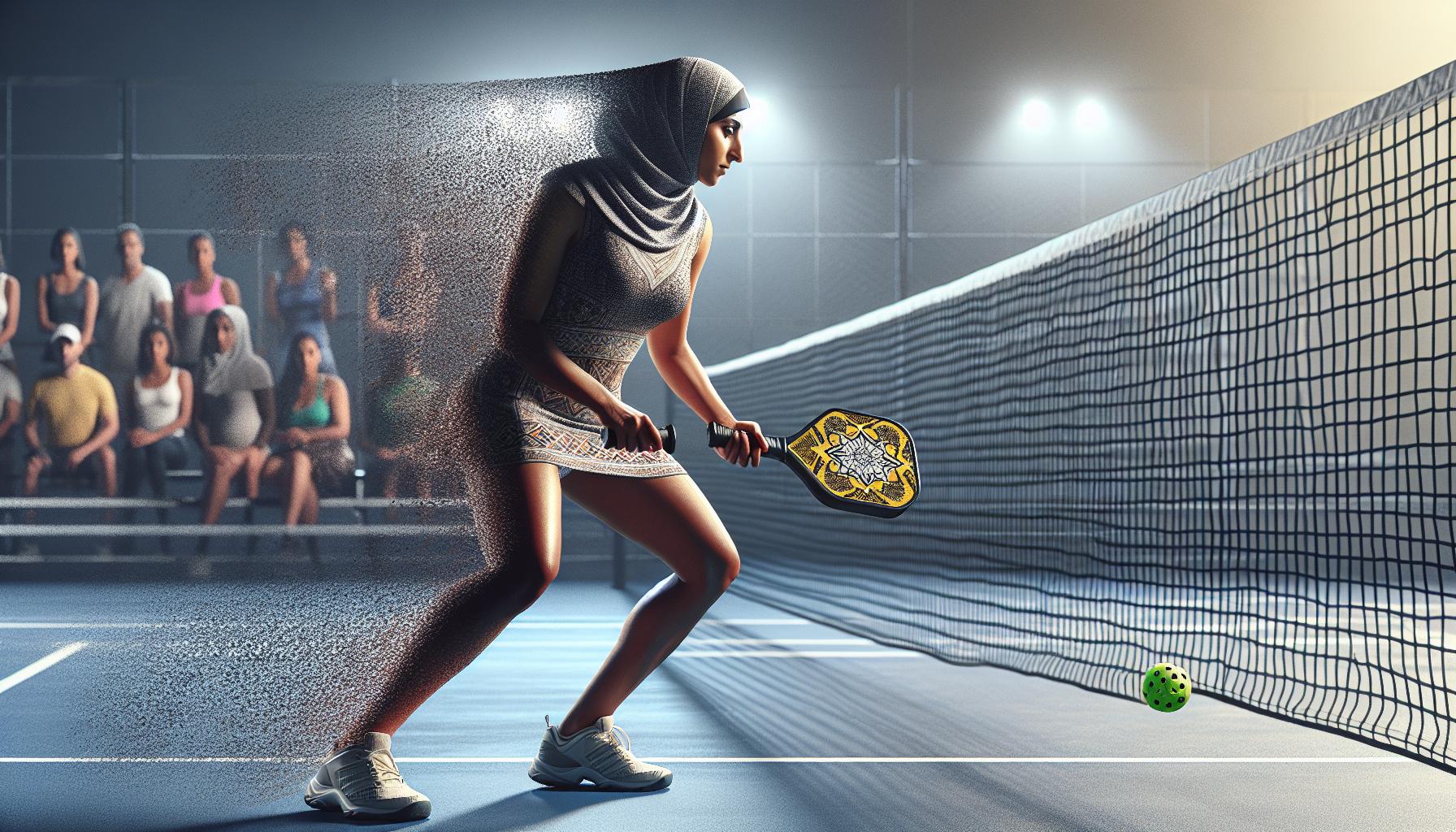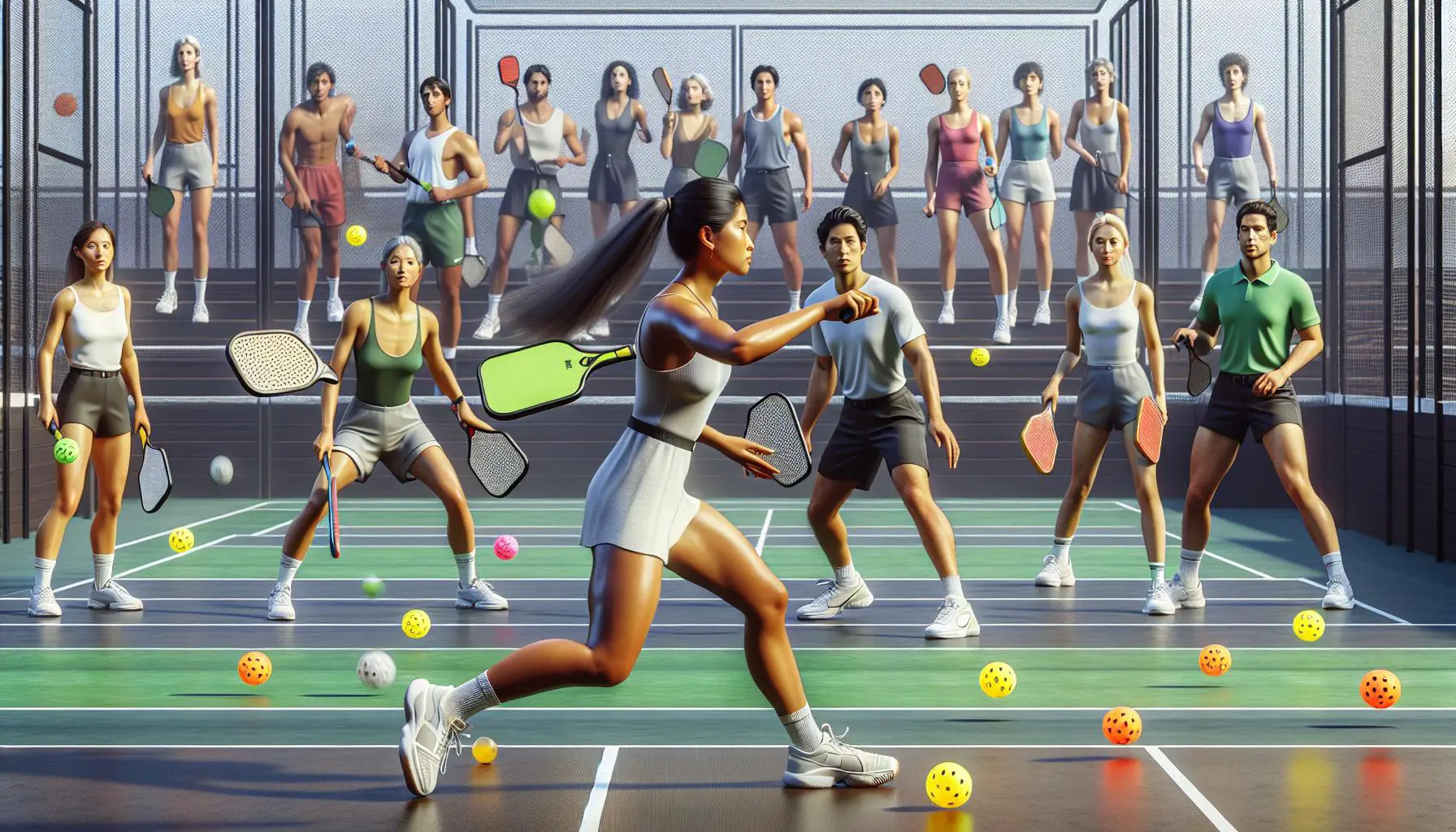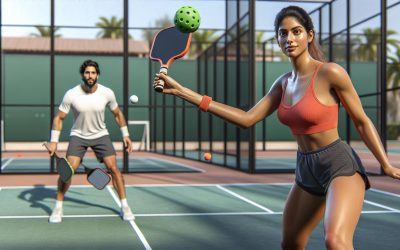Pickleball’s popularity is skyrocketing, drawing players of all ages into its fun and competitive embrace. But as more people join in, understanding the nuances of its rules, especially the carry and sling shot regulations, becomes crucial. These rules might seem straightforward at first glance, but there’s more to them than meets the eye.
Diving into the specifics, it’s easy to find oneself tangled in the intricacies of what exactly constitutes a legal move. The carry and sling shot rules, in particular, have sparked debates among players and enthusiasts alike. Let’s clear the air and shed some light on these regulations, ensuring everyone’s on the same page and can enjoy the game to its fullest.
Understanding the Carry Rule in Pickleball
In pickleball, the carry rule often confuses newcomers and veterans alike. Essentially, when a player hits the ball, it must be a single, distinct motion. The rule is designed to prevent players from catching or holding the ball on the paddle before releasing it. This might sound straightforward, but in the fast-paced environment of a pickleball game, distinguishing between a legal hit and a carry can be challenging.
The USA Pickleball Association (USAPA) provides guidelines to help clarify this rule. According to USAPA, a carry is an action where the ball sinks into the paddle and is thrown rather than struck. This violation of the rules affects the fairness and pace of the game since it can significantly alter the ball’s trajectory and speed.
For players, understanding the carry rule comes down to practice and experience. Players must focus on hitting the ball cleanly and quickly off their paddles. Coaches often emphasize the importance of a firm wrist and a controlled swing to avoid carries. Furthermore, the type of paddle can influence a player’s ability to adhere to this rule. Some paddles with rougher surfaces can grip the ball slightly more upon impact, which might inadvertently lead to carries if one is not careful.
- The ball changes direction abruptly after being hit.
- The ball’s speed significantly reduces after contact with the paddle.
- An audible “swoosh” indicating the ball was dragged across the paddle.
Recognizing these signs during play can help players self-regulate and adjust their techniques as necessary. However, it’s worth noting that accidental carries can happen even to the most experienced players. The key is in continuous improvement and understanding the spirit of the rules to maintain the game’s fast-paced and fair nature.
In competitive play, referees play a crucial role in monitoring for carries. Their trained eyes watch for the subtleties in how the ball interacts with the paddle. Players often rely on referees to make judgment calls during matches, understanding that these officials aim to uphold the integrity of the game.
Players can benefit from watching video replays of professional pickleball matches. Observing how pros handle fast volleys and tricky shots without carrying the ball can offer valuable insights. Additionally, some players find it helpful to practice with a coach or a more experienced player who can provide immediate feedback on their technique to avoid unintentional carries.
Common Misconceptions about the Carry Rule

Pickleball, a sport that mingles elements of tennis, badminton, and ping-pong, is booming in popularity. As players of all ages dive into the game, it’s crucial to set the record straight on some of the common misconceptions surrounding the infamous carry rule.
Firstly, there’s a widespread belief that if a player hits the ball forcefully and it doesn’t immediately bounce off the paddle, it’s automatically a carry. This isn’t necessarily true. The essence of the carry rule is about the action being more of a throw or a sling rather than a hit. It’s the intention and execution that matter. A ball momentarily compressing on the paddle during a powerful smash isn’t an infringement unless it’s accompanied by a distinct carrying motion.
Another misconception revolves around the idea that slow or soft shots are immune to the carry rule. Many players falsely assume that as long as the ball is hit gently, they can cradle or guide it intentionally for better precision. However, the rule makes no distinction between soft and hard hits. Even the gentlest touch that results in the ball being guided rather than struck is subject to scrutiny.
The confusion extends to the use of different paddles and materials. Some players believe certain paddles are designed to ‘hold’ the ball longer, thereby giving an unfair advantage or inherently violating the carry rule. In reality, while paddle composition does affect the ball’s bounce, no officially approved paddle is made to deliberately prolong contact or enable carrying. Players should focus more on their technique and adherence to the rule rather than the equipment.
Furthermore, the belief that referees and officials can catch every infraction adds pressure on them and creates unrealistic expectations among players. In fast-moving games, not every carry can be observed, especially in casual play without official oversight. It’s important for players to self-regulate and play with integrity, understanding that some incidents might go unnoticed.
Lastly, there’s a tricky area concerning spin shots that often gets misinterpreted. Applying spin to the ball by slicing it with the paddle is a skillful part of the game. However, some players confuse this with carrying because of the way the ball behaves after being hit. Producing spin through a clean strike is entirely within the rules. The key distinction lies in ensuring the paddle does not hold or cradle the ball during the process.
Strategies to Avoid Infringing the Carry Rule

In the fast-paced game of pickleball, understanding how to avoid carrying the ball is crucial for every player’s success. Given the nature of the game and the carry rule’s complexities, players are always looking for effective strategies to ensure their shots are legal and effective. Here, we explore several strategies that can aid players in staying within the boundaries of the rule.
Focus on Paddle Contact
One of the first strategies is emphasizing the importance of clean paddle contact with the ball. This means practicing shots where the ball and paddle are in contact for the shortest time possible. A quick snap of the wrist rather than a prolonged motion can help ensure that the hit falls within legal parameters. Players should aim for a crisp, direct hit that leaves no room for doubt about a carry.
Drill for Precision
Regular drilling of shots that commonly lead to carries can significantly reduce the risk of infractions. Players often find it beneficial to:
- Practice soft shots near the net, focusing on a gentle but firm tap.
- Work on their dink shots, making sure the paddle face is perpendicular to the ground.
- Engage in volley drills with a partner to refine the quick, reflexive strikes necessary for fast-paced exchanges.
Use the Right Equipment
While no specific paddle can eliminate the risk of carrying altogether, choosing equipment that complements a player’s playing style is vital. Players should opt for paddles with a textured surface as they tend to provide better grip on the ball for spin shots without increasing the risk of a carry. Balancing the paddle’s weight and grip size can also contribute to more controlled and precise shots.
Understand the Motion
A thorough understanding of what constitutes a legal motion in pickleball is paramount. Players should recognize the difference between a shot that naturally follows through and one that resembles a throw or sling. Visualizing the stroke as pushing the ball rather than letting it rest or roll on the paddle can also clarify the intended motion.
Self-Regulate and Seek Feedback
Due to the subjective nature of the carry rule, players should actively self-regulate during practice and matches. It’s beneficial to ask for feedback from coaches, referees, or more experienced players on whether a shot might be considered a carry. Video recording one’s games and analyzing the footage can also provide valuable insights into one’s technique and areas for improvement.
Deciphering the Sling Shot Rule

The pickleball community has seen a rising need for clarity surrounding the sling shot rule, a guideline that players often find themselves stumbling over. At its core, the sling shot rule pertains to the specific kind of shot where the ball is not merely hit but seems to be carried and then slung with the paddle. This maneuver skirts the fine line between skillful play and a potential violation of the sport’s rules.
Understanding the sling shot rule begins with recognizing that the essence of pickleball lies in brief, clean contact between the ball and the paddle. Any action that prolongs this contact, intentionally or not, risks being categorized as a sling shot. It’s crucial for players to differentiate between a legal, dynamic stroke and one that violates the principle of brief contact. In practice, a sling shot occurs when the paddle imparts additional force or direction to the ball in a manner more akin to throwing than striking.
To avoid unintentional sling shots, players should focus on three main areas:
- Paddle Grip and Angle: Maintaining a firm but flexible grip on the paddle allows for more precise control over the ball’s trajectory. Adjusting the angle of contact can help ensure the ball cleanly bounces off the paddle without any hint of dragging or carrying.
- Strike Technique: Emphasizing a quick, snapping motion with the wrist during the strike can significantly reduce the risk of elongated contact with the ball. This technique ensures that the paddle does not follow through with the ball in a manner that could be interpreted as a sling shot.
- Awareness and Adaptation: Being mindful of how different shots feel on contact with the paddle helps players self-regulate their technique in real-time. Adaptability becomes key when faced with unexpected shots or playing conditions that might otherwise tempt a player into a sling shot motion out of desperation or instinct.
Training sessions provide an invaluable opportunity to refine one’s understanding and execution of legal shots. Incorporating drills that simulate game scenarios where sling shots might accidentally occur teaches players to navigate these challenging moments. By practicing shots that toe the line between powerful strikes and potential sling shots, players can better recognize and correct their motions.
Exploring Interpretations of the Sling Shot Rule
Pickleball’s rapid growth has led to diverse playing styles, which sometimes stretch the understanding of the game’s rules. Among these, the sling shot rule stands out due to its complexity and the varied interpretations surrounding it. This rule specifically targets the action of slinging or carrying the ball with the paddle, which is considered illegal. However, as simple as it sounds, the execution of shots that borderline this rule often leaves players and spectators in a gray area of interpretation.
At the heart of the debate is how much paddle movement is too much when making a shot. The official rulebook states that the ball must not be carried or propelled with the paddle, yet what constitutes “carrying” can be subjective. A soft dink over the net may sometimes appear as though the ball lingers on the paddle a fraction longer than a fast drive, leading to disputes over legal and illegal plays. Players’ perceptions of what seems fair in terms of ball-paddle contact duration can vary significantly, influencing calls during heated matches.
Experts in the game suggest focusing on the intent behind a shot to help clarify rulings. If a player aims to manipulate the ball’s trajectory in a manner that relies on prolonged contact with the paddle, it may likely breach the rule. Conversely, if the contact, although seemingly extended, results from a defensive maneuver without an intention to control the ball’s path unduly, then it might be considered legal.
The “spirit of the game” is another aspect often brought into discussions about the sling shot rule. Pickleball was designed to be a fast-paced, reflex-driven sport. Actions that slow down or alter the game’s natural flow, such as carrying the ball intentionally, run counter to this ethos. To preserve the game’s integrity, players are encouraged to self-regulate and play within the spirit of the rules, acknowledging that every shot they play is subject to scrutiny and interpretation.
Training and Education sessions have become a critical platform for clarifying these ambiguities. Coaches and professional players often conduct workshops focusing on the correct techniques for striking the ball. These sessions not only help in refining players’ skills but also serve as forums for discussing rule interpretations and sharing experiences on contentious calls. Through such community engagement, players of all levels gain a deeper understanding of the rules, fostering a more consistent application during play.
The role of referees in interpreting and enforcing the sling shot rule cannot be overstated.
Conclusion
Understanding the carry and sling shot rules in pickleball is crucial for players who want to keep the game fair and enjoyable. It’s all about the intent behind the shot and maintaining the sport’s quick pace. Players are encouraged to engage in training and workshops to grasp these rules better and to apply them effectively during play. Referees play a pivotal role in ensuring these guidelines are followed, but it’s also up to the players to honor the spirit of the game. By staying informed and practicing integrity, the pickleball community can continue to thrive.














0 Comments